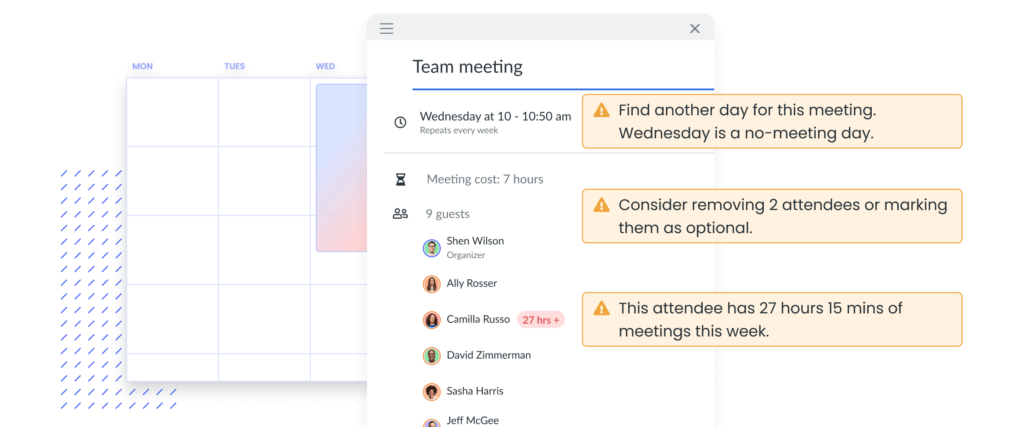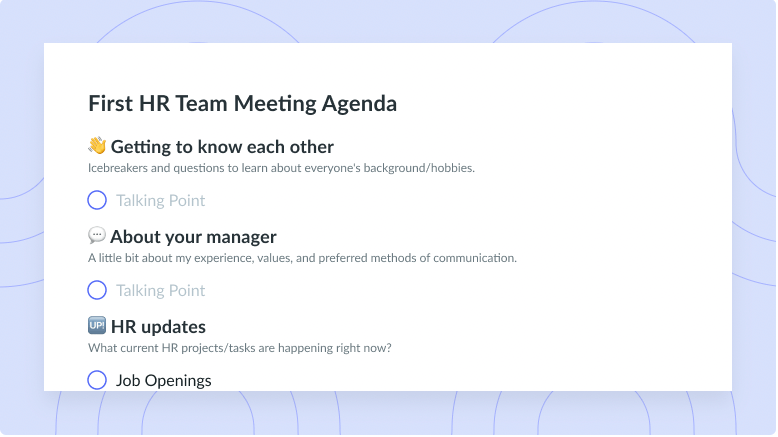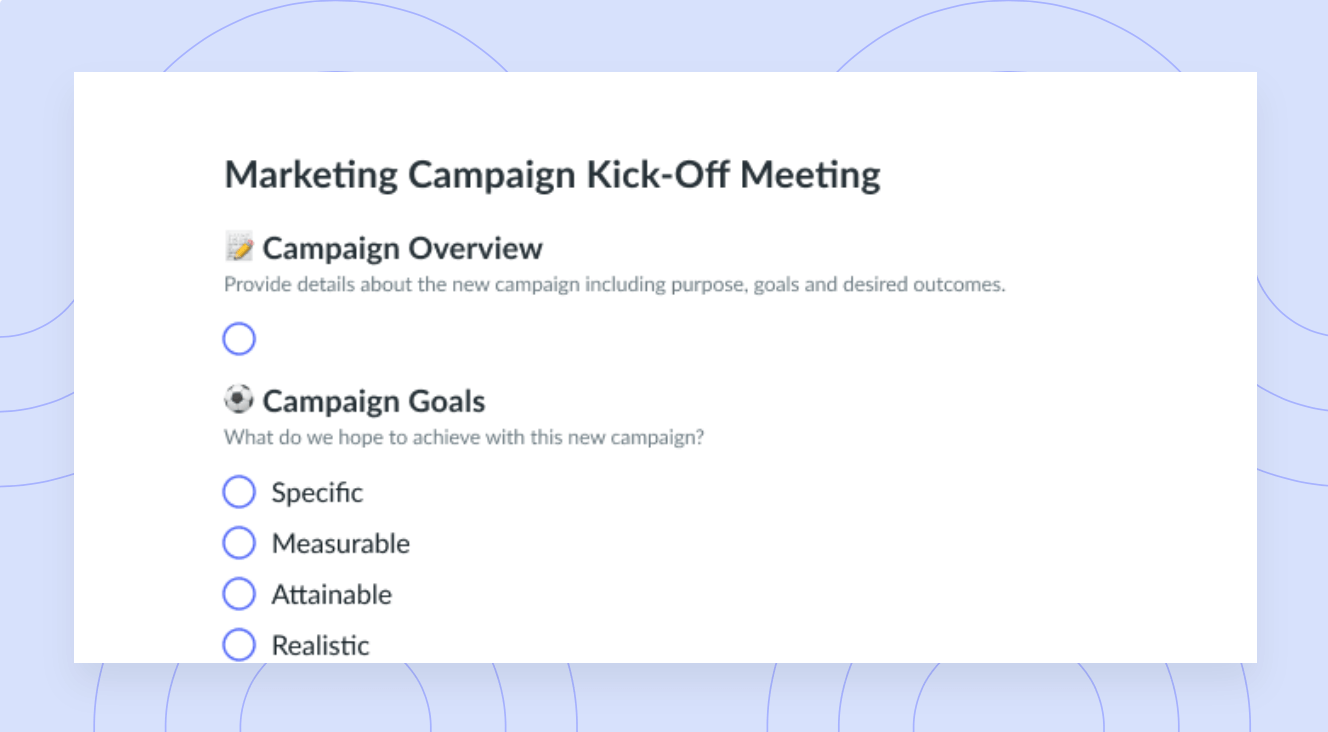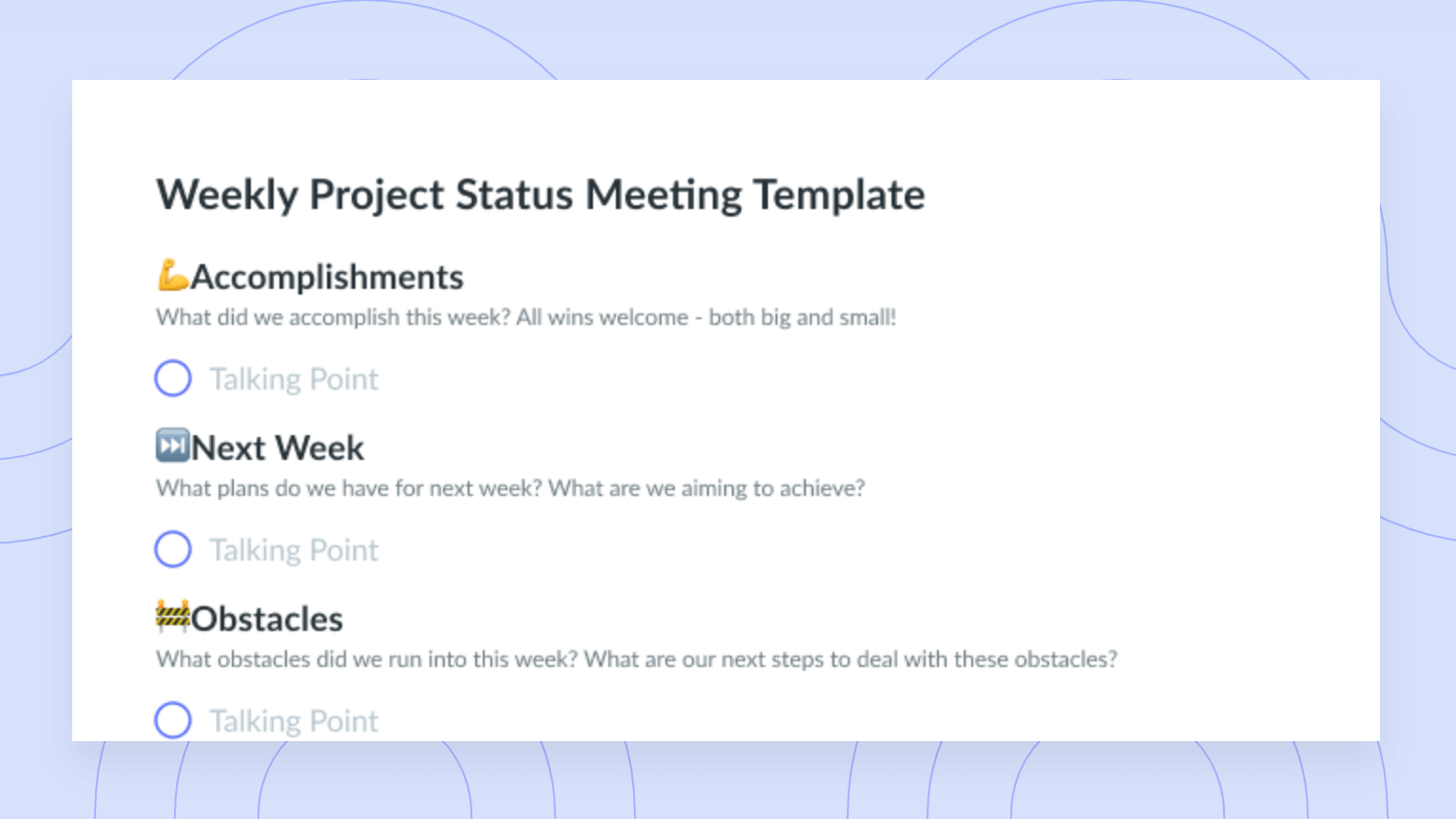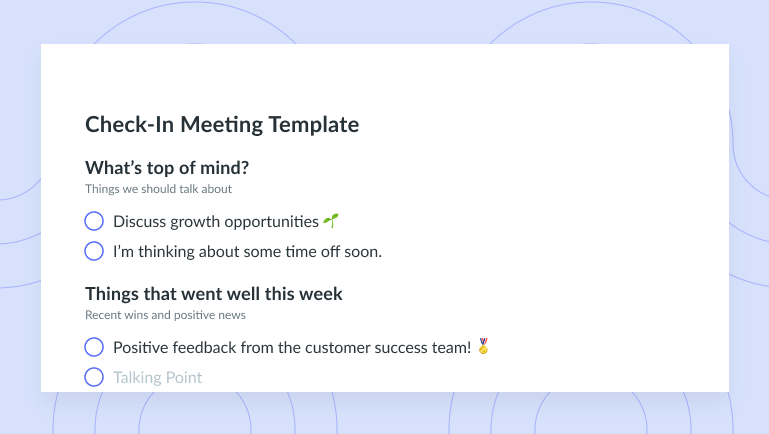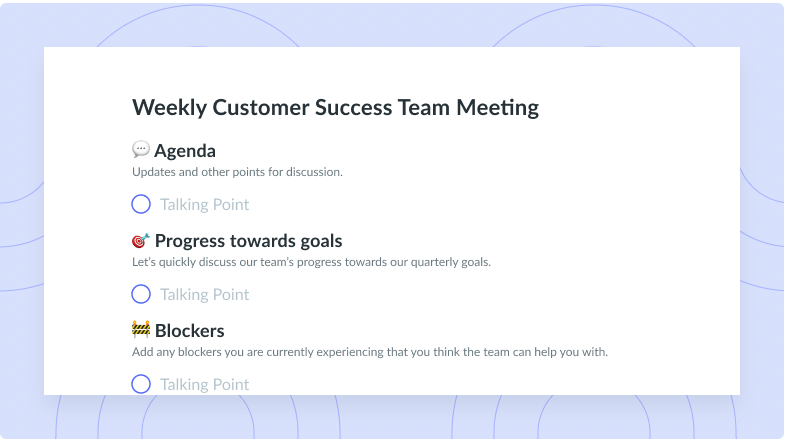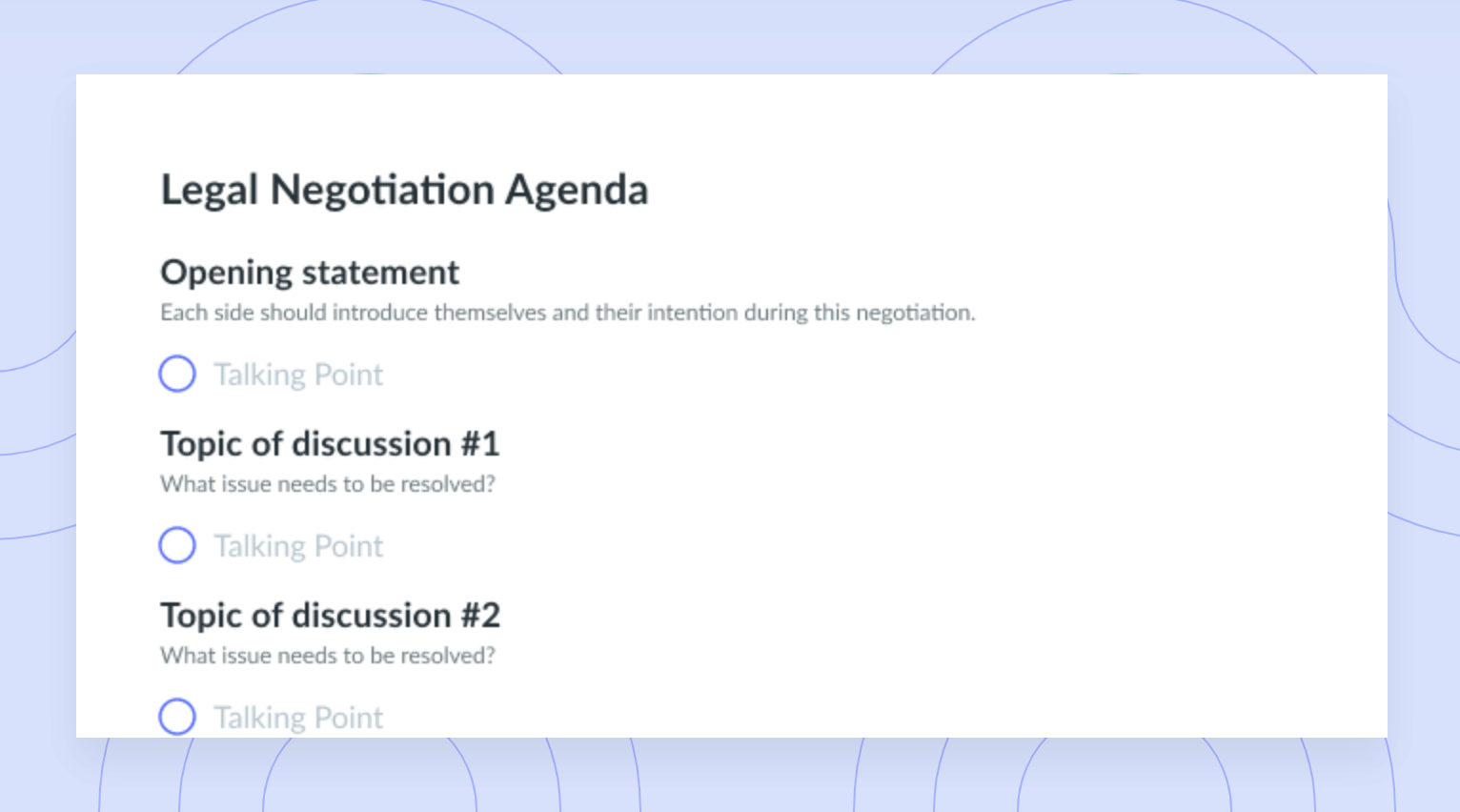What Is the Cost of Employee Turnover? + How to Reduce It
Mitigate the cost of employee turnover by creating a culture of regular feedback and leveraging our expert tips.
The cost of losing quality talent may be much more than you think. In an increasingly competitive labor market, employee turnover costs only continue to rise. So, how can you cut costs and take a proactive stance against employee turnover? Unfortunately, reducing employee turnover won’t happen overnight and instead requires commitment and a long-term plan.
In this article, we’ll define employee turnover, cover the key causes of employee turnover, and teach you how to prevent turnover with simple practices like implementing productivity software, creating a culture of regular feedback, and fostering a positive work environment.
- What is employee turnover?
- What are the costs of employee turnover?
- Why does employee turnover matter?
- What causes employee turnover?
- How to reduce employee turnover
What is employee turnover?
Employee turnover refers to the rate at which employees leave an organization. To mitigate organizational disruptions, it’s important for organizations to strike the perfect balance between employee turnover and retention. Increased turnover can be costly, result in lost knowledge, disrupt organizational operations, have an impact on customer relationships, and decrease employee morale. Effective strategies to mitigate employee turnover include improving the workplace culture, providing learning and professional development opportunities, and creating a culture of regular feedback.
What are the costs of employee turnover?
The negative impacts of a high turnover rate can snowball and vary from industry to industry. Take retail, for example: According to an article by Yours, the retail industry faces some of the highest employee turnover rates, which can largely be attributed to low wages and a lack of progression and development. A favorable turnover rate in retail would be around 10% or less; however, the article states that the United States faces a much higher turnover rate at a staggering 57.3%.
Another industry that faces astronomical employee turnover is hospitality, with Yours reporting a 73.8% turnover rate. This turnover rate can largely be attributed to a lack of job security, poor job satisfaction, and stressful working conditions.
On the opposite end of the spectrum, DailyPay reports that government jobs typically have the lowest turnover rates, with the federal government reporting a 0.6% turnover rate, state and local government reporting 0.9% turnover rate, and state and local education reporting a 1% turnover rate.
Why does employee turnover matter?
- Decreases productivity
- Negatively impacts the company image
- Harms employee morale
- Increases recruitment and training costs
1Decreases productivity
An augmented employee turnover rate can be detrimental to the productivity of your team. Not only will frequent turnover interrupt internal operations and decrease employee morale, leading to poor performance, but it will also take ample time and resources to replace these employees.

Run productive meetings, come to a decision, and get back to work
Level up your meeting habits to boost engagement and productivity with a collaborative meeting agenda. Try a tool like Fellow!
2Negatively impacts the company image
Employee turnover can negatively impact your organization’s image—especially if it happens frequently. If turnover becomes the norm, your organization will have a poor reputation, deterring talent from seeking opportunities within the company.
3Harms employee morale
When employees see their colleagues leaving, they may become uncertain or wary of their own stability. This uncertainty can create feelings of insecurity and anxiety, leading to a negative work environment that harms employee morale.
4Increases recruitment and training costs
Recruitment, onboarding, and training can be incredibly costly, especially if there’s a high turnover rate. Failing to retain talent means investing tens of thousands of dollars into recruitment and training, while mitigating employee turnover means cutting costs.
What causes employee turnover?
1Poor meeting culture
According to the NC State Poole College of Management, poorly run meetings can detract from productivity. Out of the participants polled, 62% said “meetings missed opportunities to bring teams closer.” In addition to detracting from productivity, poorly run meetings can also lead to poor engagement and employee turnover. Luckily, tools like Fellow can help you create a culture of effective meetings so you can mitigate the risk of employee turnover. Fellow gives managers and leaders the opportunity to proactively support teams with Fellow’s uniform meeting templates, collaborative one-on-one meetings, and feedback tools!
2Poor work-life balance
Failing to set clear boundaries and prioritize your employees’ personal lives will result in poor work-life balance, leading to a negative work environment and increased turnover. It’s important to note that employees who feel as though they have little to no control over their work schedules will have little to no job satisfaction, which will ultimately lead to disengagement in their roles.
3Heavy workload
A heavy workload can be detrimental to the well-being of your employees. If your employees frequently feel stressed, pressed for time, and overwhelmed by their workloads, they won’t be able to perform to the best of their abilities. Not only that, but they may seek opportunities elsewhere where the workload is more manageable, resulting in increased employee turnover.
4Lack of recognition
Recognition in the workplace is incredibly important for many reasons, including boosting morale, fostering collaboration, and retaining top talent. Failing to provide appropriate recognition may lead to decreased morale, reduced motivation, stifled innovation, a negative work environment, and ultimately, employee turnover. To avoid these negative consequences, it’s important to give credit where credit is due. You must implement programs and strategies that recognize employees for their contributions before it’s too late.
5Unclear expectations
Unclear expectations in the workplace can be incredibly frustrating, especially when they lead to poor communication, missed deadlines, or other work-related repercussions. Failing to effectively communicate expectations may result in misalignment, poor performance, confusion, stress and anxiety, a lack of accountability, low morale, decreased trust, missed opportunities, and employee turnover. To mitigate the effects of unclear expectations and reduce employee turnover, it’s crucial to foster a culture that prioritizes open and honest communication. This involves setting clear goals and benchmarks, clearly defining roles and responsibilities, and creating a culture of regular feedback.
How to reduce employee turnover
- Use productivity software
- Create a culture of regular feedback
- Provide learning opportunities for employees
- Foster a positive work environment
1Use productivity software
Working in an inefficient workplace can be frustrating. The right productivity tool will enhance efficiency, organization, communication, and collaboration by empowering employees to manage their tasks and responsibilities more effectively. Failing to harness the power of technology to streamline internal operations may be what stands between frustrated or ill-equipped employees and success.
Fellow is where teams gather to have productive team meetings and meaningful 1:1s, build collaborative meeting agendas, record decisions, and keep each other accountable. Fellow’s AI-powered features, which offer AI-generated meeting agendas, suggested topics, and transcriptions, elevate your meetings from start to finish. Dive into Fellow’s comprehensive suite of features, including over 500 meeting agenda templates, collaborative real-time note-taking, and instant feedback on meetings, projects, and performance. Fellow’s Meeting Guidelines also ensure every Google Calendar event is enhanced with best practices, urging teams to reconsider and optimize the value of each gathering. The intuitive meeting cost calculator factors in median wage, attendee limits, and recurrence restrictions, prompting organizers to craft impactful meetings. Further, clear purposes and adequate notices are encouraged, ensuring all participants are prepared to engage. And with built-in no meeting days, allocated breaks, and a cap on weekly meeting hours, your team is not only empowered for richer discussions but also given ample space for deep work and effective execution. Discover more about how Fellow is redefining productivity now!
2Create a culture of regular feedback
Feedback provides valuable insights into areas where improvements are needed, meaning your organization can gain the information necessary to keep employees happy and healthy. A culture of regular feedback also helps to promote a culture of open and honest communication, leading to enhanced teamwork, improved problem solving, and greater communication and conflict resolution.
Fellow makes the process of giving and receiving feedback simple and effective with its Feedback feature. With the Feedback feature, you can seamlessly incorporate feedback into your team’s day-to-day experience and track progress over time. Pre-built templates help you create a feedback request without overthinking the process, and your teammates can respond on the web or directly through Slack so everyone on your team can begin to implement positive change immediately.
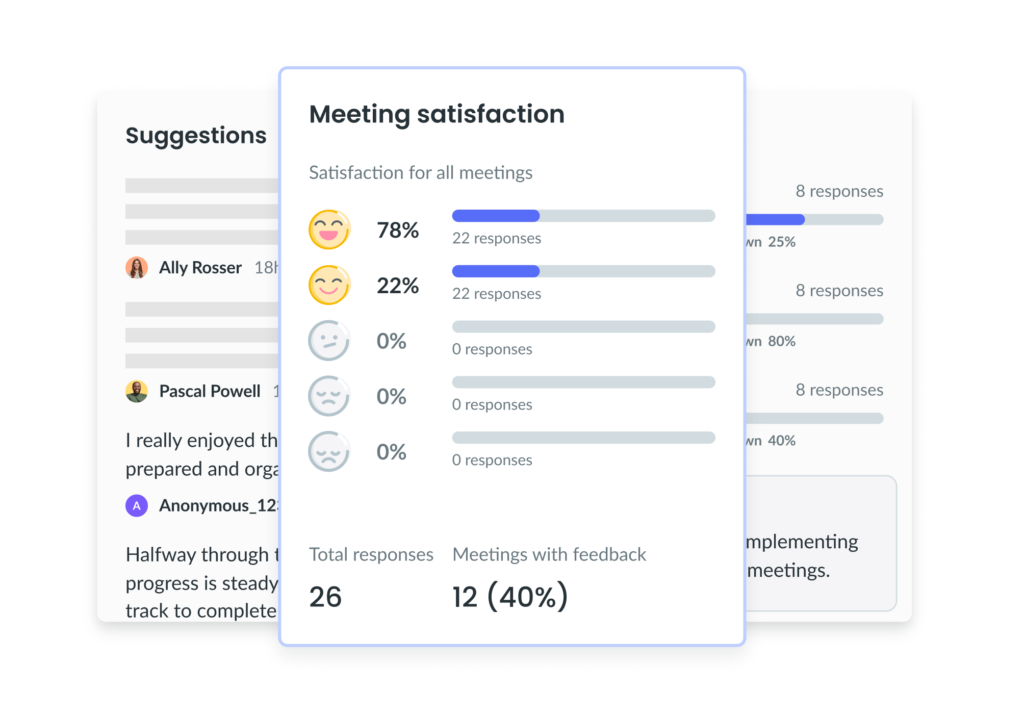
3Provide learning opportunities for employees
There’s nothing worse than feeling stagnant in your career. A workplace with little to no growth or learning opportunities is one of the quickest ways to lose high-performing employees. If employees don’t feel challenged and engaged, there’s nothing stopping them from seeking more fulfilling opportunities elsewhere. Whether it be implementing a budget for online courses, providing the opportunity to take on more responsibility, or encouraging employees to attend online or in-person conferences, providing employees with the opportunity to learn and progress in their careers is a great way to reduce turnover.
4Foster a positive work environment
Fostering a positive work environment is important for several reasons. Firstly, a positive work environment leads to psychological safety. When employees feel supported, respected, valued, and understood, they are less likely to experience burnout or feelings of resentment. The happier and healthier employees are, the less likely they are to leave the organization for opportunities elsewhere.
Tools like Fellow help create a more positive work environment by allowing team members to collaborate more effectively, set goals and track progress, and provide valuable, timely feedback to one another. Fellow also helps managers and leaders better understand their team member’s strengths and weaknesses and how they can use this information to foster a positive work environment.
Ready to combat employee turnover?
While combating employee turnover won’t happen overnight, there are simple practices you can put in place today that will save you tens of thousands of dollars down the road. If you aren’t sure where to start, simply reference the tips and tricks listed in this article. Remember, it’s much cheaper to hold on to talent than it is to recruit and train new hires.


